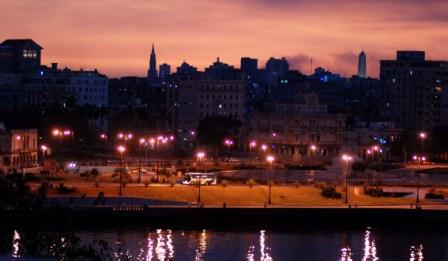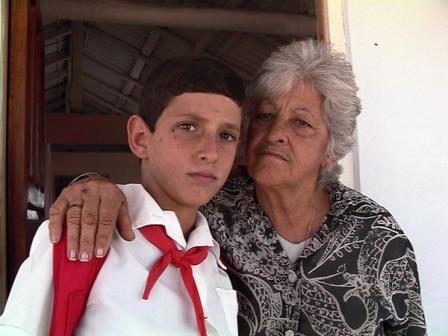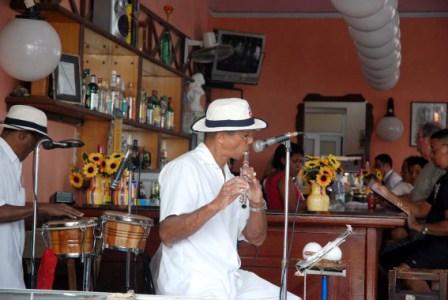Welcome to Cuba B
By Alfredo Prieto

HAVANA TIMES, May 25 – The term “Cuba B” originated in the nineties. It refers to the “Cuban back country,” traditionally known as “the provinces,” a social and cultural phenomenon that underscores the differences between the city and the rural areas (or the capital and the rest of the country). At the same time the phrase represents a situation typical of Latin American underdevelopment that we inherited from the Spaniards.
This “Cuba B” is in no way homogeneous, since each one of its territories – the west, the east and the central region – has its particular characteristics. Nevertheless I am going to use as an illustration the provinces of Guantanamo, Las Tunas and Granma, three of the most backward regions in comparative terms, which came to be as a result of the new political and administrative divisions that have been functioning in the country since 1976.
In these provinces, one of the distinctive features is the predominance of a black and mestizo population. Granma, for example is the province with the highest percentage of mestizo population in the country. They also have relatively low levels of education and culture and a minimum of tourism development. This marks a structural difference with respect to the two principal centers of development in the country: Varadero and the city of Havana, the standard examples of Cuba A.

For these same reasons the areas mentioned are characterized by high levels of internal emigration: first to the provincial capitals, the cities of Guantanamo, Las Tunas and Bayamo. From there, if possible, many people emigrate to the nation’s capital, Havana. Among other things, they come to swell the ranks of two specific jobs that no native Havana resident wants to perform: police officers and construction workers. President Raul Castro underlined this fact during a recent session of the Cuban parliament.
This is all related to the fact that this Cuba B is noted for its generally lower salaries and for a very limited circulation of hard currency, although this has increased recently, not only as a result of family remittances from emigrants in the United States, Europe and Latin America, but also from those who work on international missions – as doctors, health workers, sports trainers, etc. that the government sends for a specified time period to places as diverse as neighboring Haiti or far-away South Africa.

On the positive side, the regular Cuban peso undoubtedly maintains a value here that it lacks in the capital, a fact that Granma, and in particular its provincial capital of Bayamo. For some time now, in this part of the old Cuban East a network of highly efficient food services has been developing. This puts a variety of offerings at the disposition of its citizens at very modest prices, thus lessening the effects of the food supply problem without causing serious strains on the family budget.
There are several reasons for this, but without a doubt their remoteness from the large administrative powers has facilitated a greater degree of autonomy and operability for the local government. This serves to ratify the validity of the findings of a groundbreaking investigation on the Cuban municipalities that was carried out in the eighties.
The Achilles heel of the area, nevertheless, continues to be the problem of public transportation, as scarce as rainfall in these times of global warming.

But this Cuba B has a characteristic that perhaps is more pronounced here more than in other places. This is the prevalence of a culture that is frequently projected as paternalistic, but which even so represents a legitimate trait and a distinctive feature of its political culture, even during the most difficult years of the crisis, which there as well as here brought similar rending and ruptures.
On the other hand, atomization is not the norm. The people, the neighbors, are the chief protagonists of social relations, by definition as ubiquitous as they are transparent. In their daily interactions, people meet and greet each other in a natural way and you can note clearly that problems are less severe when they are shared and taken on with the logic of a group, not with the individualism that has been gaining ground in the capital.
Take note foreign visitors: Havana can be a mirage. Never forget that all that glitters isn’t gold.

Alberto, the deterioration in services you describe is the product of the “formula” for socialist functioning laid down by Engels and Marx in the second chapter of the Communist Manifesto. Yes, I know I’ve said it before, but apparently it must to be repeated.
Why keep repeating? Simply b/c sincere socialists such as you repeat, over and over again, something that clearly is erroneous. You and others continually place the blame for dysfunction on “bad old bureaucrats” who keep messing things up.
You blame the symptom, not the disease. I am forced therefore to try & redirect your attention to the true cause: the formula for bureaucratic, statist socialism laid out by Engels and Marx in 1848.
Correct me if I’m wrong: they say the state must concentrate “all” the means of production in its hands. What is it about “all” that you do not understand?
Your system is dysfunctional b/c you are using the wrong formula.
You need modern cooperative socialism.
F.Y.I., Alberto, there IS a Copellia in Santiago, about half-way between the Plaza Marti and the Cuartel Moncada on Victoriano Garzon. During our 2004 visit my wife, two daughters (then aged 12 and 7) and i had four ice-cream sundaes there all for $2.00 CUC’s +/- Apparently it was then off the tourist track, as the waitresses and even managers were used to only dealing in CUP’s and had a deal of difficulty with calculator figuring out what to charge. Although we had to wait in line for maybe an hour, it was well worth it. By now I’m sure they’ve figured it out and developed a dual CUC/CUP system of payments, since Copellia is right on one of the main avenues betwixt downtown and the Hoteles Santiago de Cuba, Las Americas, San Juan, etc. Also, re: “Cuba B,” I recommend Bayamo, where I stayed briefly during my 2006 trip. A wonderful town with lots of historic, artistic and architectic wonders.I hope to return there my next trip.
This is another unfulfilled promise of the Cuban government. Like most third world countries, every thing important is in the capital. Fidel denounced this practice in the 60′ when he suggested the capital of Cuba should be in Guiamaro, Camaguey. Sadly, the exact opposite is true, in which every provincial city have lost their lust, personality, ammenities, jobs and development. Suffice to say that Enramadas in Santiago de Cuba was one of the most beautiful streets in Cuba converted today into a dump, the Aguilera Movie was one of the finest in Cuba when it was intentionally burnt to the ground in 1960. It was to be rebuilt bigger and better; not so, after 50 years. 70-80% of night clubs, restaurants, beaches, parks, movies, theaters, hotels, motels, buses, taxis, cafeterias, have been shut down, demolished or priced beyond reach of most. Copellia Ice cream parlor built in Havana in ’65, have not made it to Santiago as yet. Who’s to be blamed for this mass migration?
Nice photos! Most tourists and journalists mostly seem to mostly spend most of their time in Havana. It’s the political and administrative capital of the country, and it has 25% of the population. But it seems to have much higher per centage of the island’s unhappy people, grousing and complaining as well. This very thoughtful look at the island’s interior helps explain the fact that support for the Revolution is significantly higher in the rest of the country than in the capital city.)